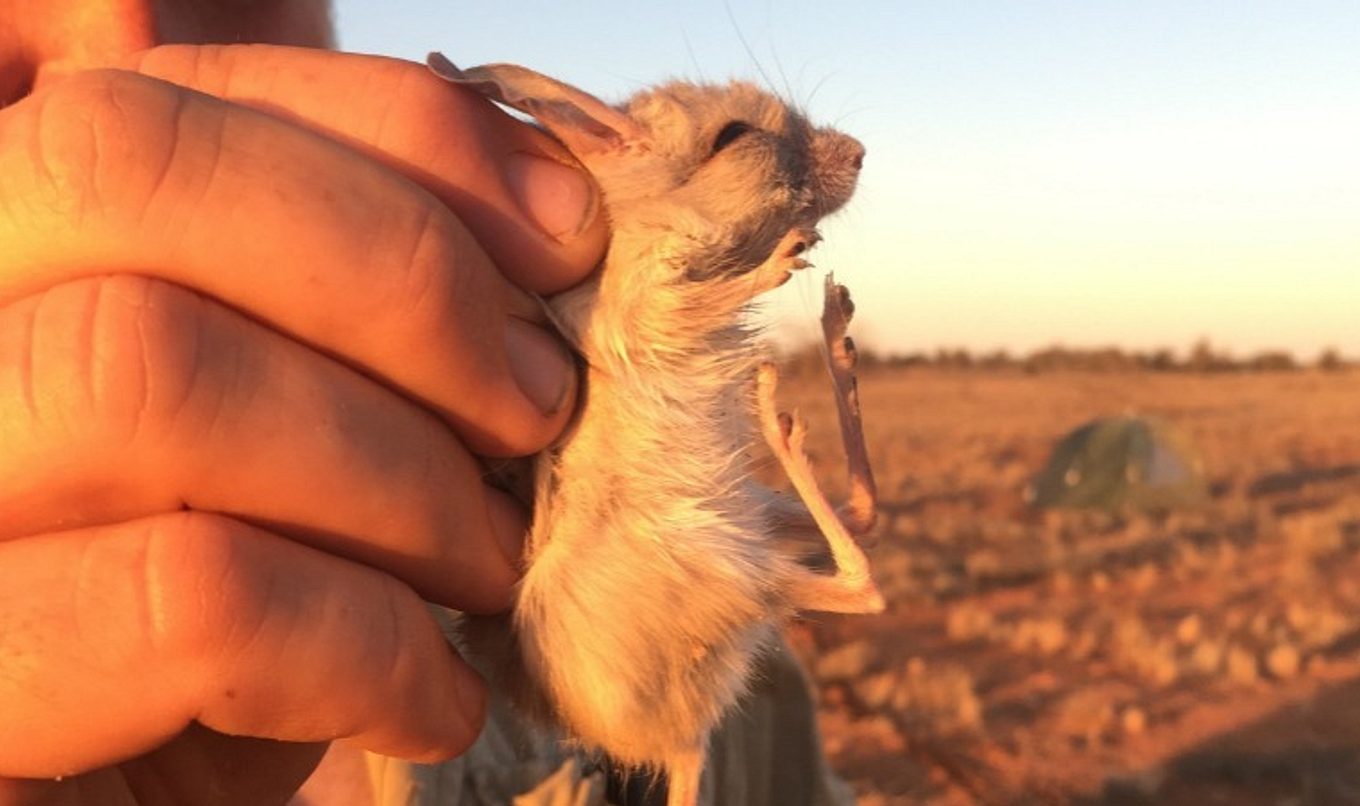Populations of Dusky Hopping-mice contract due to dry conditions in northern SA
The distribution of the Dusky Hopping-mice in northern South Australia appears to have contracted, possibly due to dry conditions and other factors.

The mice are a threatened species found in the north of South Australia and adjoining states, and characteristically have long hind feet, large ears, dark eyes and a tufted tail tip.
A 2011 study found that Dusky Hopping-mice had spread significantly to areas well inside the Dog Fence and into habitats where they had not previously been recorded.
Exceptional rainfall in 2010 and 2011 and lower rabbit numbers since the introduction of rabbit calicivirus were thought to be factors contributing to the spread of the native rodent.
However, follow-up monitoring in 2012 found fewer numbers of hopping-mice, with signs detected at less than half of the sites (43 per cent) compared to 70 per cent of those surveyed in 2011.
Last month a follow-up survey was held, revisiting sites surveyed in 2011 and 2012, and results indicate that the expansion of the species hasn’t been sustained beyond the high-rainfall years.
Hopping-mice signs were found at just 18 per cent of surveyed sites, with the majority of those outside the Dog Fence.
Department for Environment and Water SA Arid Lands community ecologist Cat Lynch said it appears the recent dry conditions have caused Dusky-Hopping mouse populations to contract.
“The survey results indicate that Dusky-Hopping mice populations expand in numbers and into new areas when conditions are good,” Ms Lynch said.
“And when dry conditions reduce vegetation cover and food resources, the populations reduce and the areas where they are found also contract.”
Fourteen pastoral stations, mainly south of the Dog Fence were visited to look for signs of the species, with survey techniques including spotlighting, trapping and searching for tracks and burrows.
Evidence of associated feral predators and herbivores was also recorded.
The survey was led by the SA Arid Lands Natural Resources Management Board and funded through the National Landcare Program, and was supported by landholders and volunteers.
Dusky Hopping-mice are nocturnal and live in small groups in sandy habitats, where they construct and live in burrows up to a metre below the ground.
Ms Lynch said like many other native mammals, numbers have declined greatly due to overgrazing by stock and competition with rabbits and the introduced house mice. Other threats to the species include predation by cats and foxes, and habitat loss and degradation.

